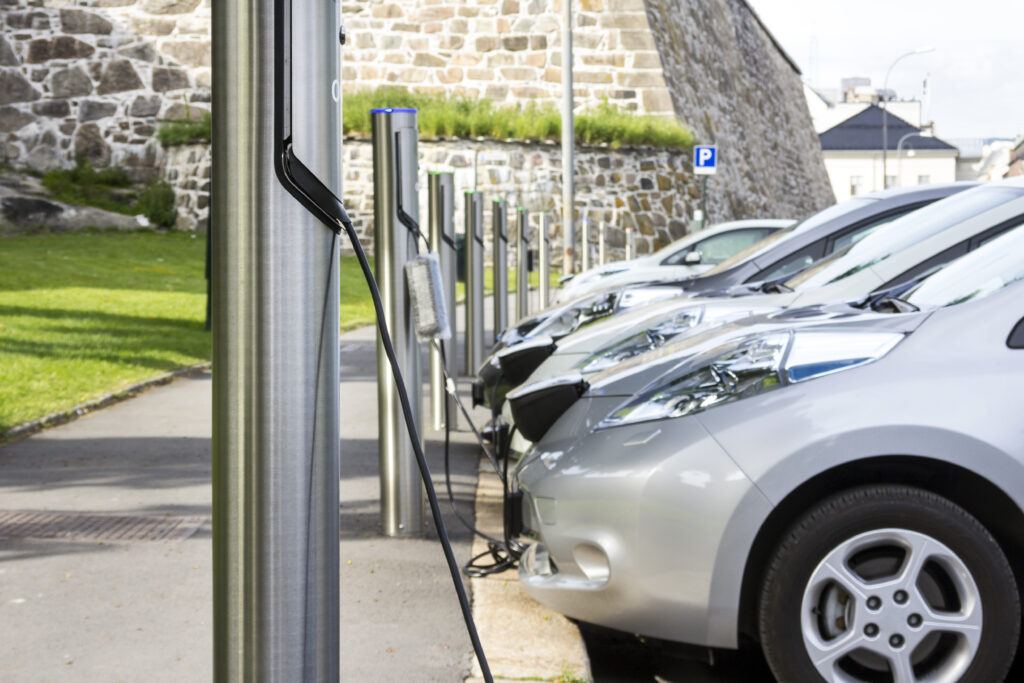
To accelerate environmental benefits of EVs, prioritize miles over ownership
Papers co-authored by UCLA professor make the case for policy and infrastructure changes
Increasing the percentage of electric vehicles on the road would go a long way toward reducing carbon emissions and improving air quality.
But to get the most out of EV technology, policymakers should shift their focus from encouraging the sale of electric vehicles to the number of miles the cars are driven.
Fortunately, the explosive growth of ridesharing has created a perfect opportunity to do just that.
In an article in Environmental Research Letters, UCLA associate professor Deepak Rajagopal and Amol Phadke of Lawrence Berkeley National Laboratories argue that, despite fast-growing demand, the potential of battery-powered electric vehicles is not being harnessed fully.
Part of the problem is policymakers have been focusing primarily on establishing financial incentives for consumers to buy new electric cars. The federal government currently offers a $7,500 tax credit for new EV buyers, and California tacks on an extra $2,500.
Instead, Rajagopal said, policymakers should promote and fund better infrastructure for charging EVs, and subsidize high-usage vehicles that spend a lot of time on the road, such as taxis and cars used for Uber, Lyft and other ridesharing services.
“We have drivers who drive a lot,” he said. “They can save money on gas and reduce pollution, but they are often poor and don’t have convenient access to fast chargers.”
Because of the cost of their batteries, electric vehicles tend to have higher upfront sticker prices than comparable gasoline-powered cars. EV owners do save money over time by avoiding fill-ups at the gas station, but for about 90% of U.S. drivers, it takes at least five years to recoup the difference in sticker price. However, for the 0.2% of drivers who log the most miles — at least 134 miles per day — that payoff only takes two years.
Getting high-mileage drivers in electric vehicles delivers multiple benefits: It reduces a larger amount of emissions for the investment and promotes economic fairness by making the vehicles more available to low-income households and communities.
The paper notes that electric vehicle ownership is concentrated in high-income households and communities. In California, for example, just 6% of the state’s EV subsidies went to households in disadvantaged communities. People in those communities are often unable to take full advantage of the financial incentives, especially when it comes income tax credits — they may lack the tax liability for those credits to matter.
Because those in need of extra income frequently turn to ridesharing jobs, such policies would likely help poor and underserved communities.
Rajagopal recommends that governments subsidize rideshare drivers based on the number of miles they drive in electric cars, in addition to providing loans to help finance the initial vehicle cost.
“Here is an opportunity for electric vehicles to be a win-win,” Rajagopal said. “They can help the environment and they can help people save money.”
Rideshare drivers who use EVs, he said, could save hundreds of dollars per month that would otherwise be spent at gas pumps.
The paper acknowledges that the approach could have the negative effect of encouraging people to drive more than they otherwise would. But Rajagopal said that’s not very likely because of the higher maintenance costs drivers would incur, and because most people wouldn’t be willing to spend unnecessary hours driving to get the benefit. Policies could also be implemented to discourage excessive driving, including by capping government subsidies if drivers exceed a certain mileage or by using congestion pricing — charging drivers for using roads during busy times.
Rajagopal also is a co-author of another paper on the subject, published in the journal Transportation Research Part C: Emerging Technologies. In that report, the authors recommend that cities improve the infrastructure for electric vehicle charging, and argue that the popularization of ridesharing creates an opportunity.
Their analysis of New York and San Francisco determined that 600 to 1,000 chargers in each city would be enough to meet current demand while maintaining the same level of service. And the chargers could be concentrated in just 10 to 20 strategic locations per city, perhaps in structures that are currently parking garages.
Infrastructure improvements, along with policy-based incentives for rideshare services and drivers, could also promote broader adoption of electric vehicles, the authors wrote, because it would give riders first-hand experience with the vehicles and “create more familiarity with the technology by simply being on the road more.”
Co-authors of the Transportation Research article are from UC Berkeley, Lawrence Berkeley National Laboratory and Emerging Futures, LLC, a technology consultancy.
Published:


